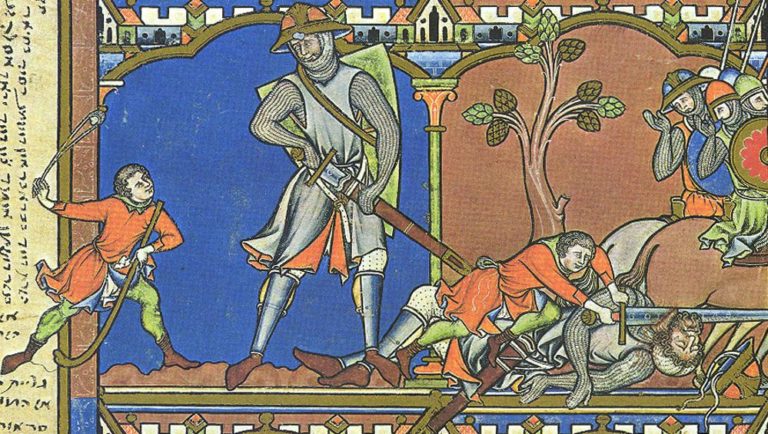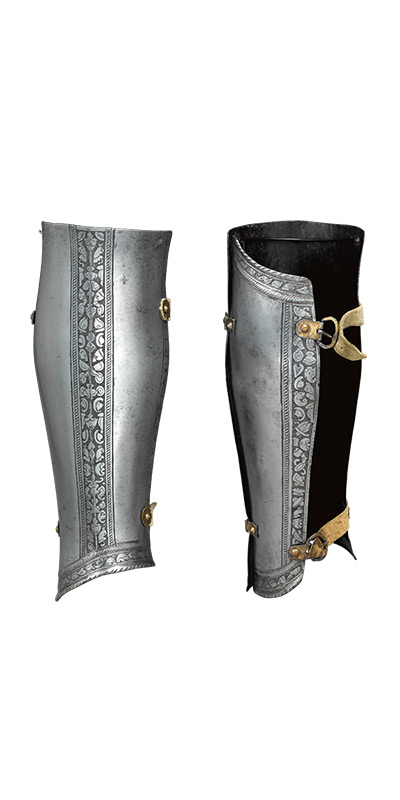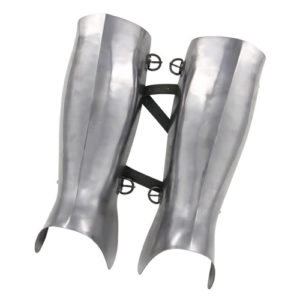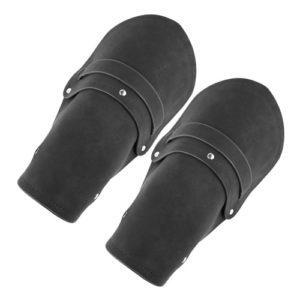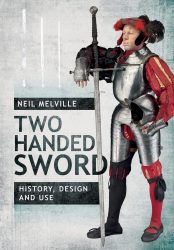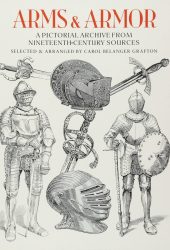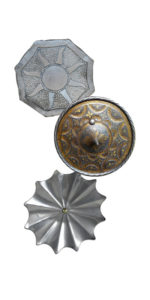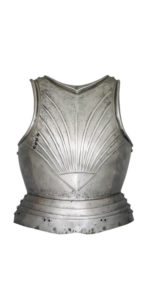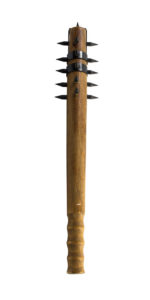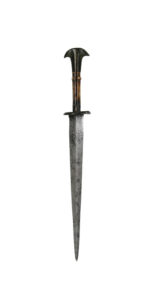The Greave or Jambeau was a piece of armour used to protect the tibia from attacks. Greaves usually had a metal exterior and an inner padding of felt. The felt padding was important because, without it, any blow would transfer directly from the metal plating to the shin – and the tibia is an extremely bone vulnerable to just about any kind of attack.
Greaves were used in antiquity, with examples mentioned in texts like Homer’s Iliad and Virgil’s Aeneid. During the 9th century, greaves lost popularity but reappeared around the year 1230. Most of then, then, covered only the shin. Greaves evolved to protect the entire leg around the year 1320.
History of the Greaves
Greaves are mentioned in Greek antiquity in several texts, such as Hesiod’s Shield of Heracles, Homer’s Iliad and Virgil’s Aeneid. Although these are primarily mythological texts, they still dealt with warfare and give examples of greaves being used.
There are also non-fictional testimonies of Roman light infantry (or hastati) using greavers. These were mass-produced using presses on sheets of metal and later attaching a lining of leather or cloth. There’s evidence of people using one greave on the right or left leg, possibly as a symbol of status rather than for practical purposes. There are also skeletons buried with just one – including gladiators and soldiers.
In medieval Europe, greaves seem to have been popular until the 9th century, when the disappear from findings. By 1230 we can again see a depiction of a greave in the Goliath in the Trinity College Apocalypse manuscript.
Types of Greaves
- Shynbalds: Most greaves using medieval times were schynbalds, or greaves that protected the shin.
- Closed Greaves: Around the year 1290 we see the appearance of closed greaves that protect the entire leg. These consist of two plates joined on the outside by hinges and fastened with buckles and straps.
Medieval Depictions of Greaves
